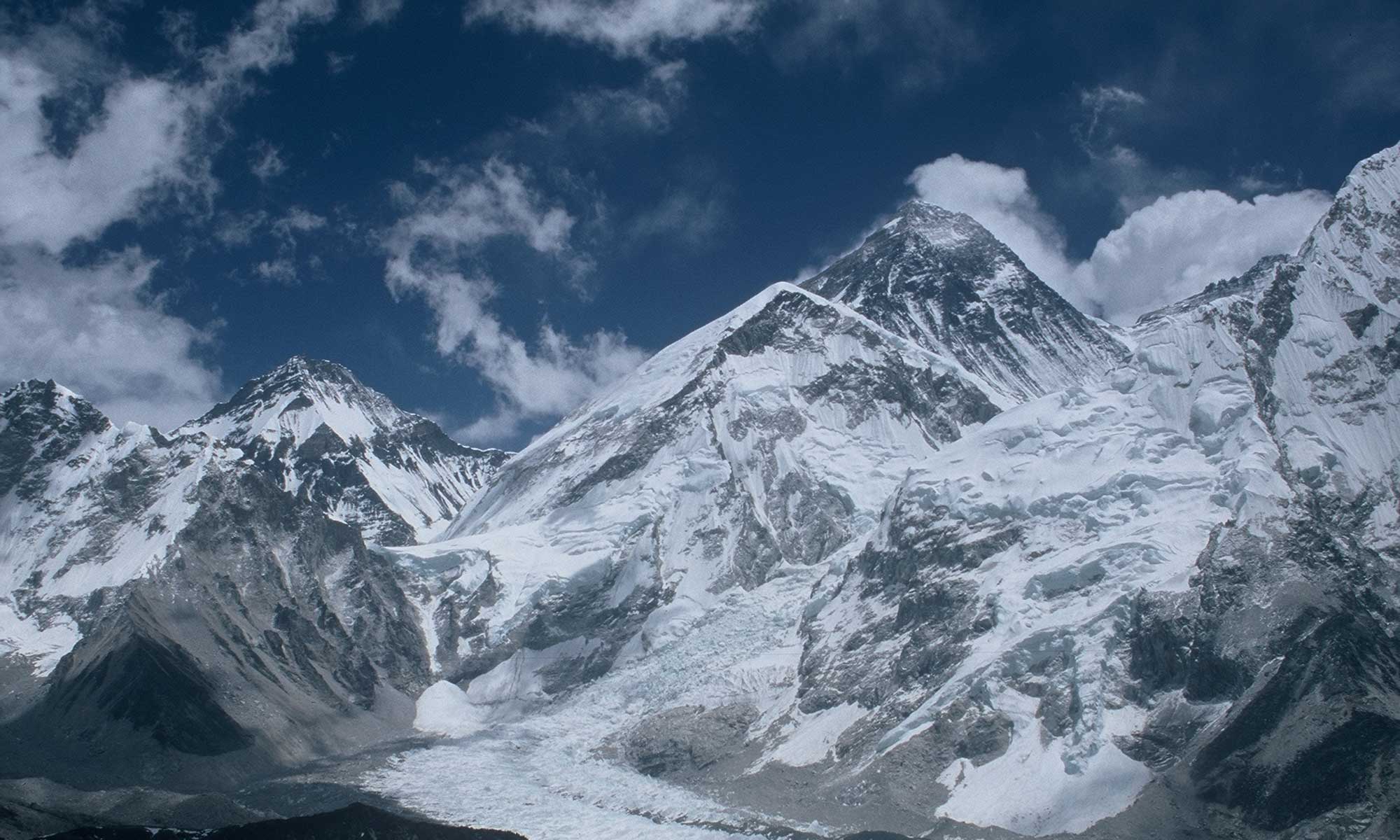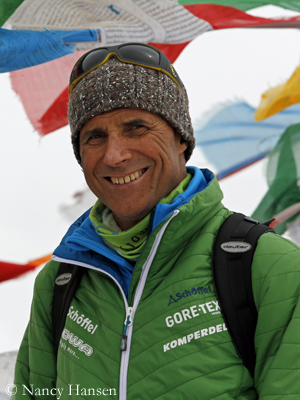K2 is not yet flexing its winter muscles. At least until Wednesday, meteorologists are forecasting calm winter weather on the world’s second highest mountain – with wind speeds of only around 20 kilometers per hour and temperatures in the summit zone around minus 40 degrees Celsius.
“We want to make the best out of the weather,” let Nepalese Nirmal “Nims” Purja know before he set off from base camp last Sunday with four Sherpas. Ideally, they want to secure the route via the Abruzzi Ridge up to the last high camp at 7,600 meters, Nims informed. Mingma Gyalje Sherpa, who also ascended with his Nepalese team mates Dawa Tenzing and Kili Pemba, gave Camp 3 at 7,200 meters as the preliminary goal. And Iceland’s John Snorri Sigurjonsson and the Pakistani father-son duo of Muhammad Ali and Sajid Ali “Sadpara” are also on the route again. According to John, they reached Camp 2 at 6,700 meters today, at minus 30 degrees Celsius and lots of blue ice on the route.
This trio had already reached the base camp at the foot of K2 on 5 December. In the meantime, the largest group has also arrived there, the team of the expedition operator Seven Summit Treks. In total, about 60 climbers want to try their hand at the first winter ascent of K2. The 8,611-meter-high mountain is the only one of the 14 eight-thousanders that has never been scaled in the cold season.
Discussion about style issues
Ralf Dujmovits – the first and so far only German climber to stand on the summits of all eight-thousanders – has initiated a debate about the style of the possible first winter success on K2. “I would find it a real pity if someone steals the first winter ascent of K2 by using supplemental oxygen,” the 59-year-old wrote on Instagram: “The general public might see this ‘conquering’ of K2 as a great feat, but the first winter ascent should be left to those who can do it by fair means.”
Only on Everest with bottled oxygen

In twelve of the 13 previous winter first ascents of eight-thousanders, the climbers succeeded without bottled oxygen. Only during the first winter success on Mount Everest in 1980 did the Poles Krzysztof Wielicki and Leszek Cichy use breathing masks above the South Col at almost 8,000 meters – “because we didn’t know that it was possible to climb without,” as Krzysztof once told me. “Our leader [Andrzej Zawada] said, here is the bottle. You have to carry it. One bottle, nine kilos. When we climbed to the summit, we realized, that the bottle was empty.”
To where does “by fair means” extend?
A few of the K2 contenders this winter, such as Mingma Gyalje Sherpa, South Tyrolean Tamara Lunger and her rope partner, Romanian Alex Gavan, Pole Waldemar Kowalewski and Chilean Juan Pablo Mohr, have announced their intention to climb the second highest mountain on earth without bottled oxygen. None of them, however, has so far held out the prospect of an ascent via a route other than the Abruzzi Spur. This route will then be secured at the decisive points with fixed ropes, which possibly, at least in the upper parts, mountaineers with breathing masks have placed there. Is that still “by fair means”? By the way, this question does not only arise at K2.
Update 30 December: John Snorri Sigurjónsson’s GPS tracker shows that he and his teammates have returned to base camp.


